New progress in the accumulation of anthocyanins in pear made by the research group of Jiang Shuling from Institute of Pomology, and the research group of Professor Li He from Shenyang Agricultural University
Recently, the research group of Jiang Shuling from Institute of Pomology, Chinese Academy of Agricultural Sciences (IPCAAS), and the research group of Professor Li He from Shenyang Agricultural University jointly published a research paper titled "Plant U-box E3 ligase PpPUB59 regulations for anthocyanin accumulation by ubiquitination PpBBX24 in 'Zaosu' pear and its red bud mutation" in the JCR Q1 journal Plant Physiology and Biochemistry (2024IF=6.1), analyzing the mechanism by which PpPUB59 and Ppbbx24-del synergistically regulate the anthocyanin accumulation in ‘Red Zaosu’ pear.
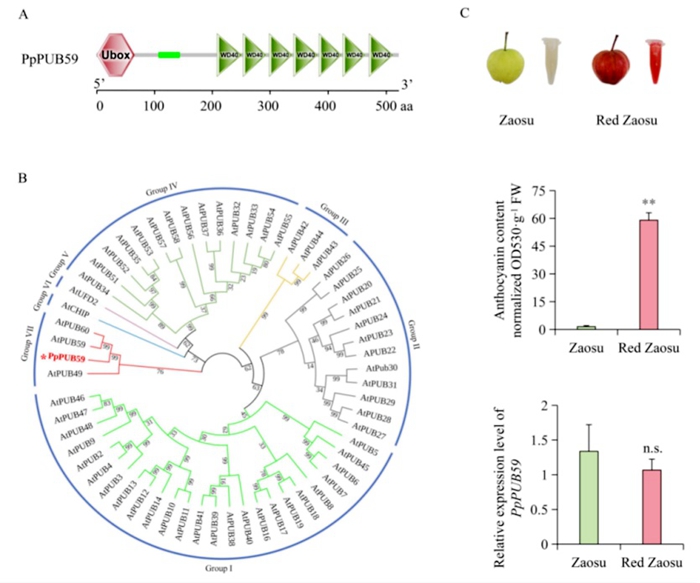
Red pears are highly favored by consumers due to their beautiful appearance and rich nutrition. Exploring the key genes and analyzing the formation mechanism of red trait are great significant for red pear breeding and cultivation regulation. Previously, the team identified a Ppbbx24-del gene closely related to the red trait in the red sport of 'Zaosu' pear, and proved that this gene positively regulates the anthocyanin accumulation in 'Red Zaosu' pear due to frame shift mutations.
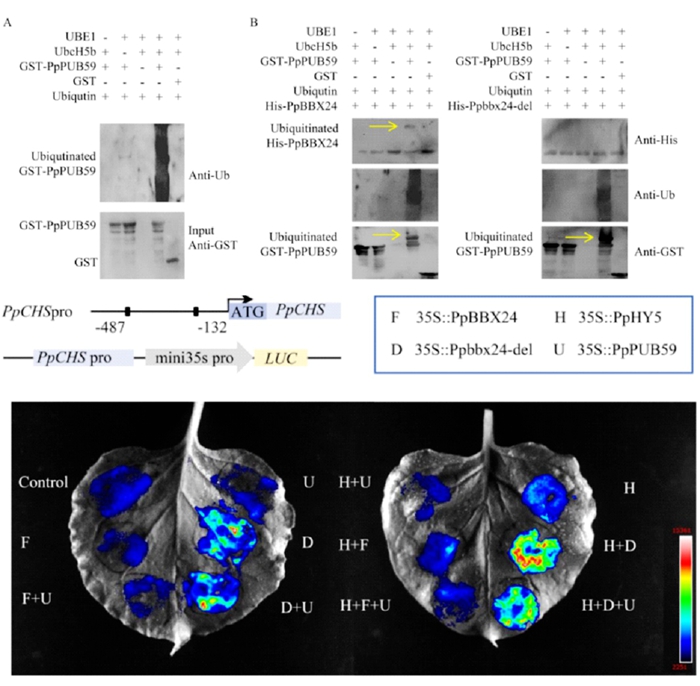
On the basis of previous research, this article further identified an E3 ubiquitin protein ligase PpPUB59 and conducted in-depth studies on its role in the anthocyanin accumulation in 'Red Zaosu' pear. The results showed that PpPUB59, as a U-Box E3 ubiquitin protein ligase, contains a U-Box and WD40 tandem repeats domain, and the WD40 tandem repeats domain was the key domain that interacted with the VP domain of PpBBX24 and PpHY5; PpPUB59 had ubiquitination activity and could ubiquitinate PpBBX24, which could then be degraded by 26S proteasome; Because of the frame shift mutation, Ppbbx24-del lacked the VP domain, and could not interact with PpPUB59, thus avoiding ubiquitination. The protein had good stability and could continuously and stably bind to the G-box element in the promoter of the anthocyanin synthesis gene PpCHS , activating its expression; PpHY5 could also bind to the G-box element in the promoter of PpCHS and activate its expression, with a significantly weaker activation effect than Ppbbx24-del, and could be inhibited by PpBBX24 and PpPUB59. In summary, this study drew a model diagram of the synergistic regulation of anthocyanin accumulation in 'Red Zaosu' and 'Zaosu' pears by PpPUB59, PpHY5, PpBBX24, and Ppbbx24-del, further elucidated the molecular mechanism of anthocyanin accumulation. PpPUB59 is another newly identified gene involved in plant anthocyanin accumulation, it would enrich the theory of anthocyanin synthesis and regulation in plants.

Doctoral student Li Shuran jointly trained by Shenyang Agricultural University and IPCAAS and Associate Researcher Ou Chunqing are the co-first authors of this article, while Professor Li He and Researcher Jiang Shuling are the co-corresponding authors of this article. This study was supported by the National Natural Science Foundation of China (32072531), the Science and Technology Innovation Project of the CAAS (CAAS-ASTIP-2016-RIP), and China Agriculture Research System - Pear (CARS-28).
Link: https://doi.org/10.1016/j.plaphy.2024.109354
By: Ou Chunqing
(ouchunqing@caas.cn)
-
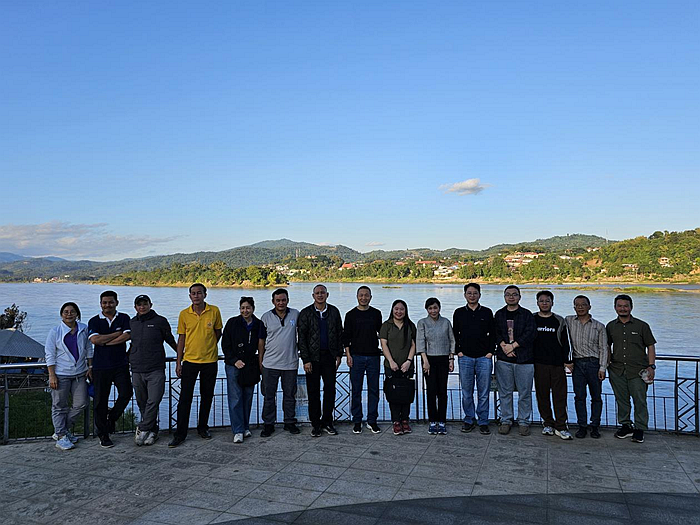 Jan 21, 2025IAED-CAAS Delegation Visits Thailand for Scientific Cooperation
Jan 21, 2025IAED-CAAS Delegation Visits Thailand for Scientific Cooperation -
 Dec 12, 2024Chinese Academy of Agricultural Sciences (CAAS) is launching the NARS Capacity Building through China-Africa Research Partnership Program
Dec 12, 2024Chinese Academy of Agricultural Sciences (CAAS) is launching the NARS Capacity Building through China-Africa Research Partnership Program -
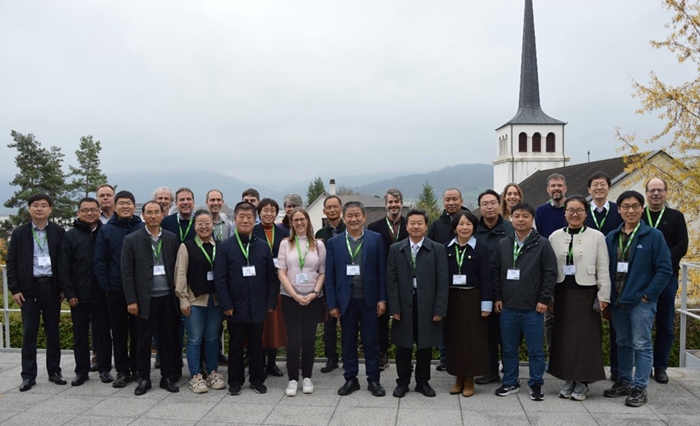 Dec 05, 2024China-CABI Project Development Workshop Held in Delémont, Switzerland
Dec 05, 2024China-CABI Project Development Workshop Held in Delémont, Switzerland -
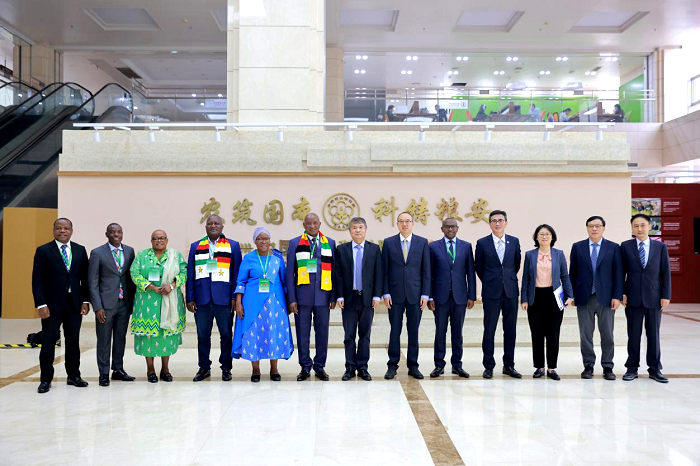 Dec 05, 2024Ministerial Workshop on Digital Agriculture and Rural Revitalization for BRI Partner Countries Held at CAAS
Dec 05, 2024Ministerial Workshop on Digital Agriculture and Rural Revitalization for BRI Partner Countries Held at CAAS -
 Dec 05, 2024CIAR and FGV Deepen Cooperation to Promote the Development of China-Brazil Green Agricultural Products Value Chain
Dec 05, 2024CIAR and FGV Deepen Cooperation to Promote the Development of China-Brazil Green Agricultural Products Value Chain
